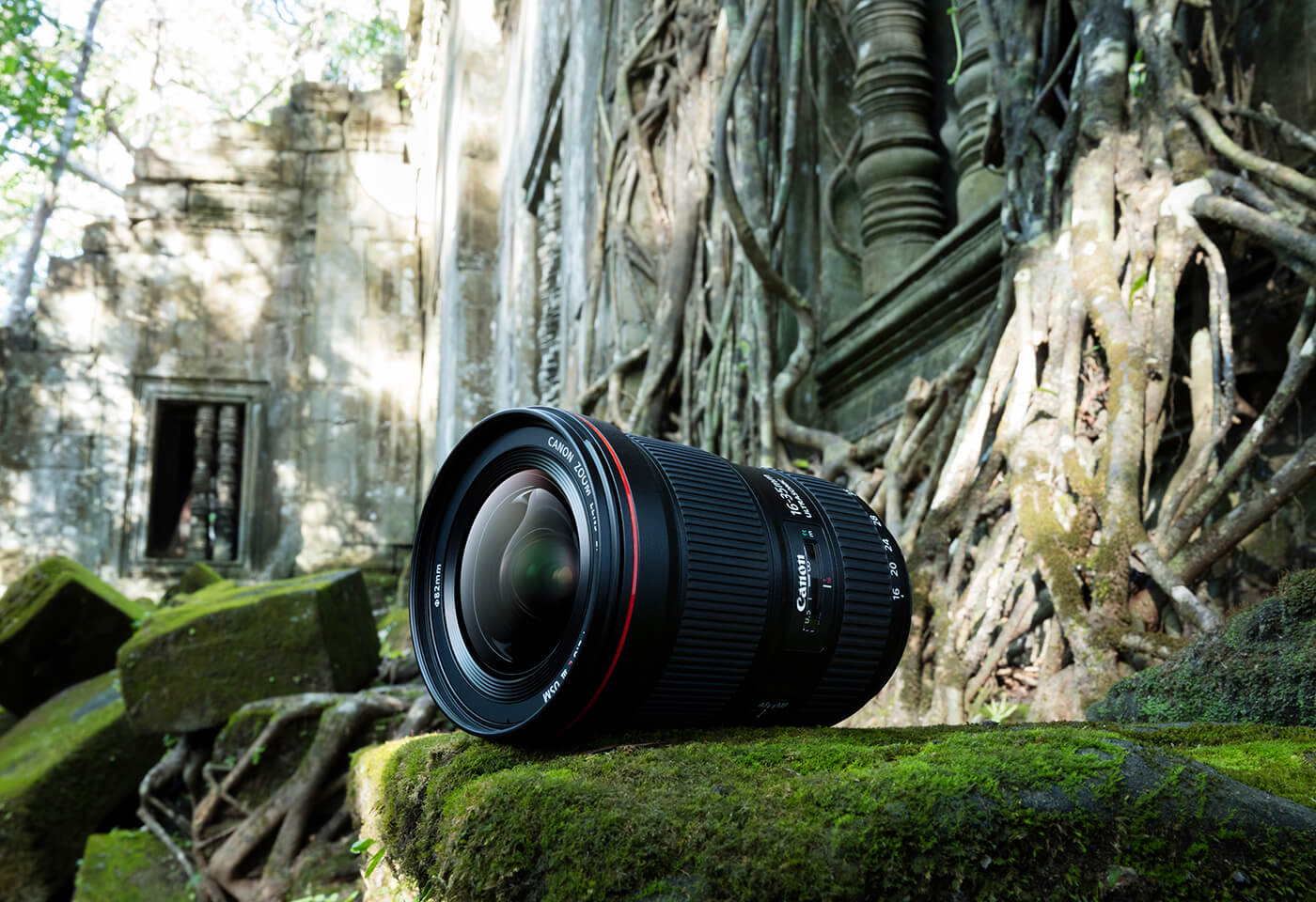In this article we’re going to talk about some common focal lengths in lenses and how they might be applied in our Gunpla photography, hopefully giving you a better idea of which prime lens you might want to purchase next!
Please note that the focal lengths discussed in this article are for an APS-C crop lens.
When I first switched to prime lenses, I thought my 60mm macro would be the end-all-be-all solution for my photography needs, but after finally going back to doing action photoshoots, I’ve finally began to understand the limitations of each type of lens.
These days I work predominantly at 24mm and 60mm, with a few fringe cases at 35mm. I’ll try to explain each use case:
The wide angle (24mm and under)
Wide angle lenses are typically used in landscape photography, but they do still serve a purpose for Gunpla. Namely action poses where a weapon is involved:
Left – Zeta Gundam with HML taken with 60mm lens
Right – Same framing, now shot with 24mm lens
What a difference! Who can say no to bigger guns? The reason for this is that the wide angle lens tens to exaggerate the size of objects closer to the lens. With that being said in order to get the same framing as the 60mm (as in the Zeta Gundam is roughly the same size in the frame), the 24mm lens needs to be much closer, and as a result the HML looks way larger. You could get the HML to look the same size with the 60mm, however you’d have to end up cropping out the bottom half of the MS from the frame.
The downside to the wide angle though, is since you need to get the camera pretty close to the subject to get these kind of shots, is that the camera itself may start to cast a shadow on the subject itself. Be sure to tune your lighting setup to compensate!
Also due to the nature of how closer objects look larger, the wide angle isn’t the greatest for a portrait type shot as it will tend to distort the subject (make them fatter/taller than they look).
Portrait (~50-60mm)
Around 60mm is what we would consider the optimal focal length for portrait shots. This is best for taking the “as-is” shot of the subject with minimal distortions, and when the subject is mostly at a single depth level:
The disadvantage though, is highlighted in the 24mm example, wherein everything might look kind of “flat”. For example if the subject is holding a disproportionately large weapon and it is pointed directly at the camera, it may look comically small.
That’s not to say that you still can’t take a good action shot with a 60mm lens though:
Another downside of the portrait-type lens, if you want to take a landscape shot you will have to stand quite far back from the subject:
An example of how far a 60mm lens has to be positioned to get a full frame portrait and landscape shot of the 1/8 KOS-MOS figure.
Mid (~35mm)
Finally we come to the proverbial middle child. The 35mm can kind of fill both roles with some caveats. Let’s see it in action:
Left – Impulse Blanche with with 60mm lens
Right – Same framing, now shot with 35mm lens
Consider the above example, the image on the left is the Impulse Blanche taken with a 60mm portrait lens, while the right is done with a 35mm. You’ll notice that the 35 produces more of a perspective effect at this kind of low angle (which may or may not be the effect you are going after).
Left – Impulse Blanche with with 24mm lens
Right – Same framing, now shot with 35mm lens
And now for the action pose, you can still get nice shots with the 35mm (right), but the 24mm wide angle (left) will produce the most dynamic shots especially with weapons pointed at the camera.
Final Words
So to summarize:
The wide angle (~18-24mm) is best at action shots with large weapons pointed at the camera, but isn’t really suited to take “as-is” photos with no distortion.
The portrait lens (~50-60mm) is best for portrait shots where the subject is mostly at a single plane.
The mid lens (~35mm) can do both but not to the same extent that either the wide / portrait lens can.
A Zoom lens can give you the flexibility of all the above, but the image quality would not be as good as any single one of the prime lenses above at the same focal length.
I hope this article has helped illustrate how the different focal lengths can affect the kind of shot you will get, and perhaps help you decide which prime lens you might want to get next.
Also please consider becoming a Patron or donating if this guide has helped you! Thanks!


















Are you using a full frame camera?
Nope, APS-C Crop frame